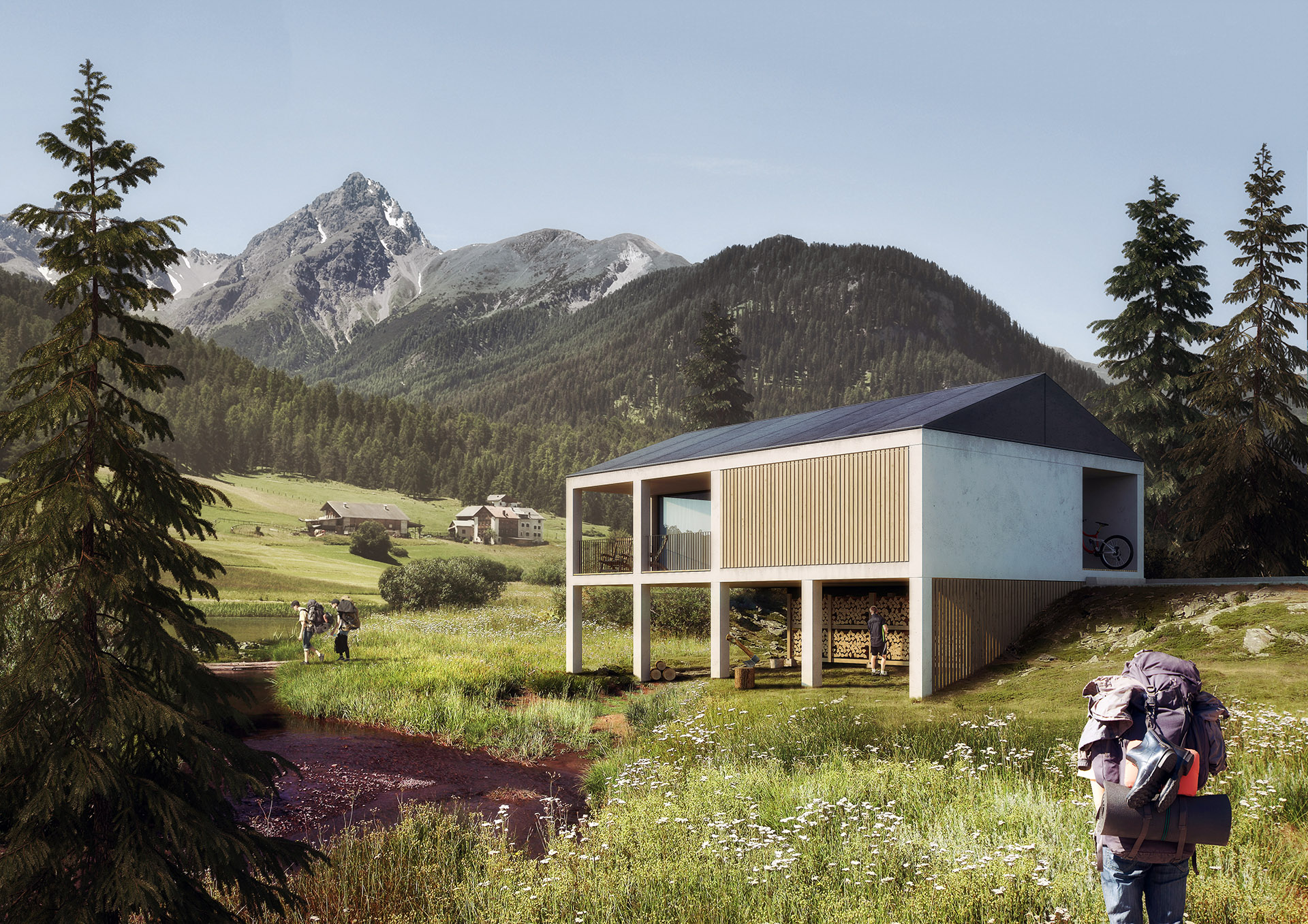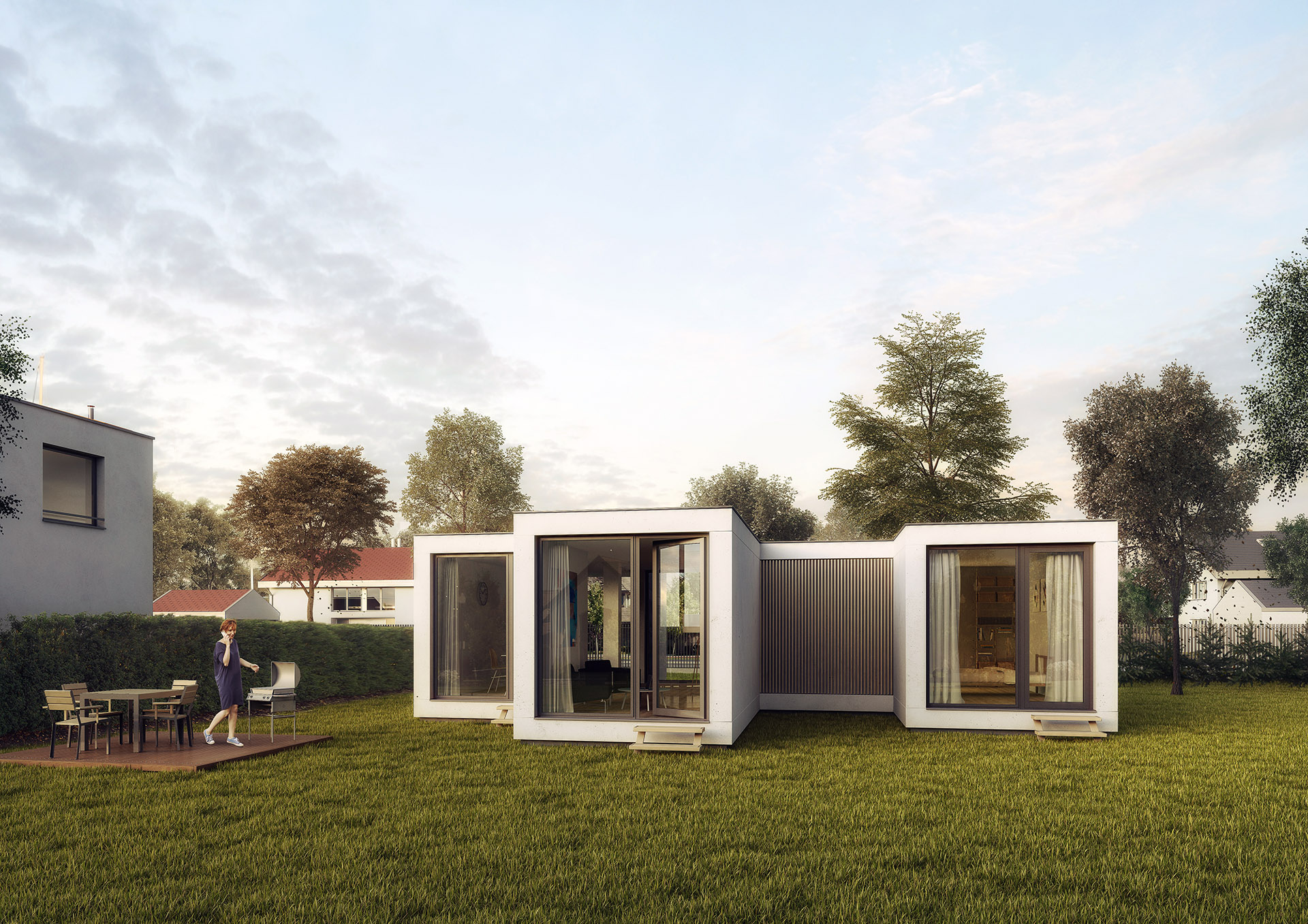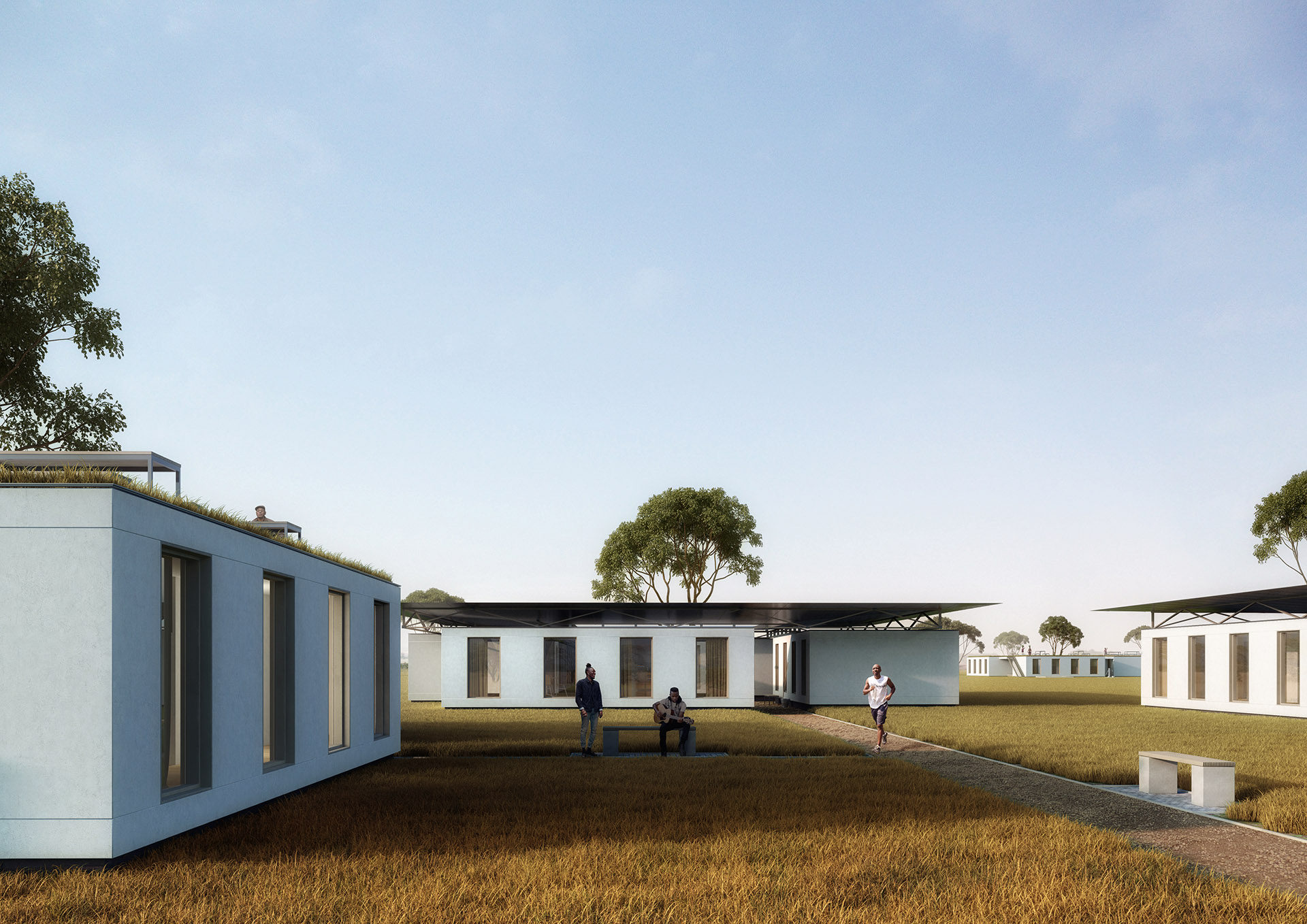Upcycling: Swiss made plastic house
Switzerland is often cited as a model for recycling because of the rubbish collection, waste separation and waste recovery methods deployed. Public bodies, research institutes, companies and citizens are taking action to reduce their impact on the environment and society. Businesses are innovating and developing technologies for resource management, rubbish collection and recycling more effectively with a view to creating a more circular economy.
With greater energy efficiency needed in future, recycled waste is becoming an important source of raw materials, with towns and cities ultimately being exploited as urban mines. PET Plastics are recycled in ever more creative and varied ways, but it is often a challenge to recycle a mix of polymers. UHCS is an approach to upcycle PET which not only provides solutions for plastic recycling, but also introduces sustainable methods to the construction industry, an industry which faces a lot of challenges on its path to higher energy-efficiency and sustainability.
PET for Cost Efficient and Sustainable Housing
The Ustinov Hoffmann Construction System (UHCS) is a modular construction system using recycled plastic waste, such as PET. The design is the result of its creator’s goal to create a cost efficient ecological and sustainable housing unit which can be put up easily all over the world. It was first presented in 2017 at the International Inventions Show in Geneva, where it won the International Federation of Inventors’ Associations’ IFIA Prize. The project has since won further awards at many other events and now, three years later, the system is ready for the market launch. UHCS is designed to be universal and scalable, meaning it can be franchised and produced on an industrial scale and the constructions adhere to the most exacting SIA and ISO standards. Co-founder and Inventor of UHCS Igor Ustinov states:
UHCS is the solution to provide quality housing without impacting nature, by encouraging a virtues circular economy by reusing and upcycling Plastics as a valuable resource to fulfil human needs.

Plastic Houses Made in Switzerland
Through a process of extrusion, the PET material is upcycled and turned into the UHCS profiles. These profiles assemble like a Lego game to form a cubic post-and-beam structure, with load-bearing walls which can be adapted to different architectural traditions and cultural contexts. This system facilitates high-quality construction while reducing the impact of humans on the natural world and produces buildings with better environmental performance. “The UHCS design is cost efficient to produce, but is mostly the result of high construction performances, modularity, scalable to produce, and easy to transport and implement on a construction site,” Ustinov describes the modular nature and adds: “UHCS has triggered a lot of interest, we have numerous proposals and demands, in several regions and countries, from building hotels, schools, villages, warehouses, private homes, public infrastructure, even a water factory… We will be happy to serve all these purposes soon.”
PET is the preferred UHCS building material. Instead of throwing away or destroying, UHCS transforms PET and gives this material a second life. Most importantly, the material is non-toxic and available worldwide. If climate and other local conditions call for it, it is also possible to use other plastics. But the process does not end there: Once a building or dwelling has come to the end of its life – which is after an estimated 80 years – it can be recycled again or destroyed with a minimum impact on nature. This continued reusing of materials is a building block for a healthier world while enabling builders to develop new buildings that are themselves recyclable.

Building with PET – or PEF
Did you know that today, there is a realistic evolution available to replace at least some of the PET that is currently in use? This solution is called PEF and it is a polyethylene furanoate compound. The polymer is similar to PET, but unlike PET, it is obtained from fructose and produced using sugar beet and maize residues. Researchers at the Swiss Federal Institute of Technology ETH Zürich developed a production process that makes PEF marketable and it is only a matter of time till the first production plant opens. Just like other polymers, PEF can also be recycled using the UHCS system, especially as it is harder and stronger than PET. As a result, less material will be needed to achieve the same amount of stability and safety for buildings, which adds another economic benefit.
“The ambition of UHCS is to franchise its Swiss quality Construction system around the world thus to encourage locally circular economy of wastes to contain pollution and protect natural resources from exhaustion, while providing quality housing for all; but to do so we must first demonstrate, therefore we are preparing the UHCS pilot house,” Ustinov outlines the aims of UHCS and their next steps. The pilot house will be built in Switzerland in 2021, followed by other buildings all over the world.

Video by UHCS describing their solution on Youtube




